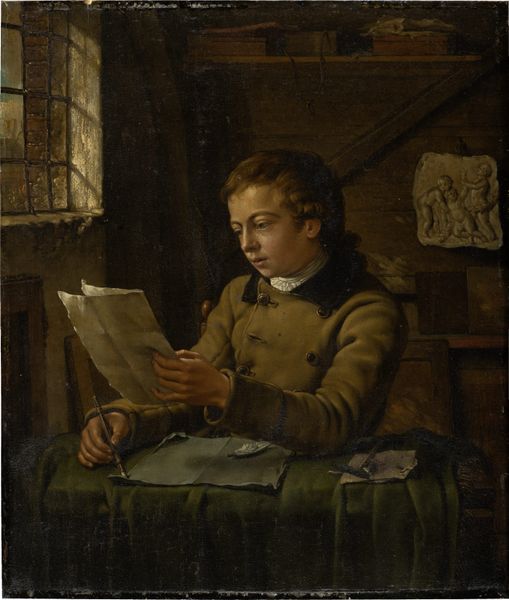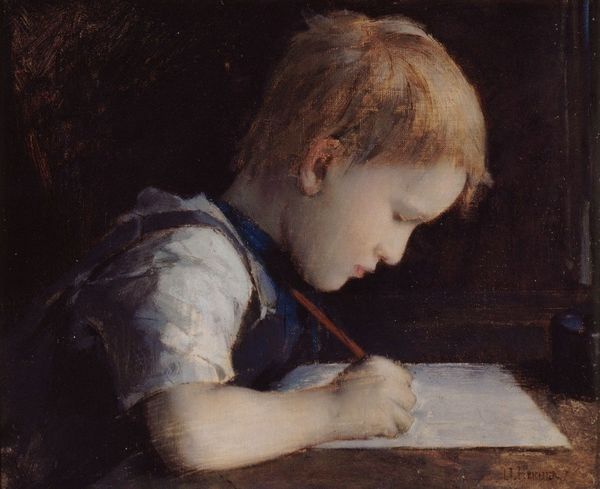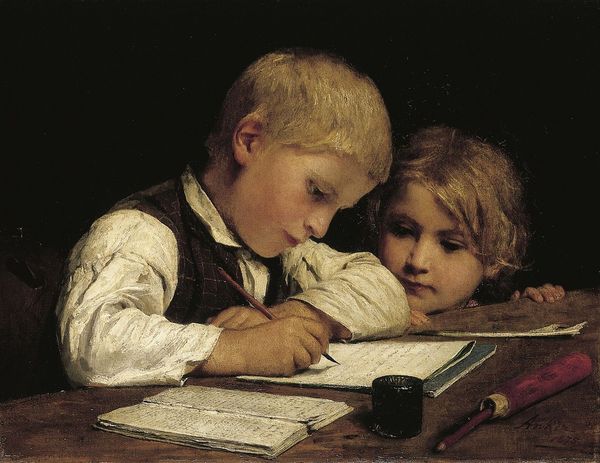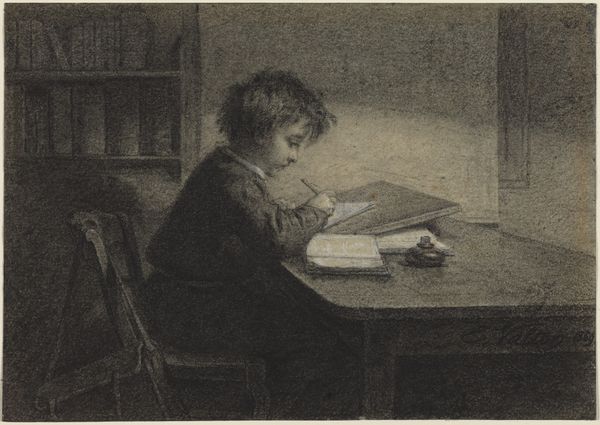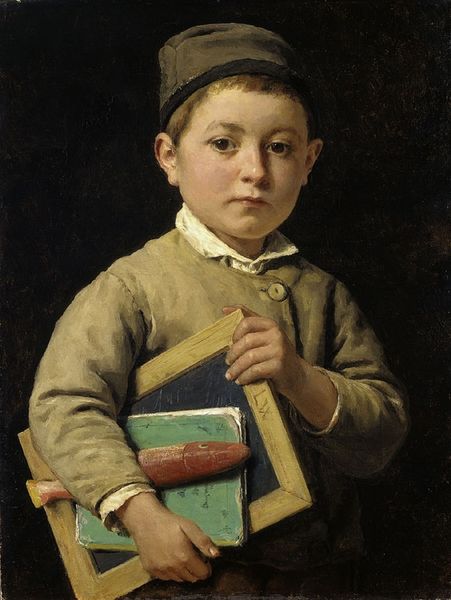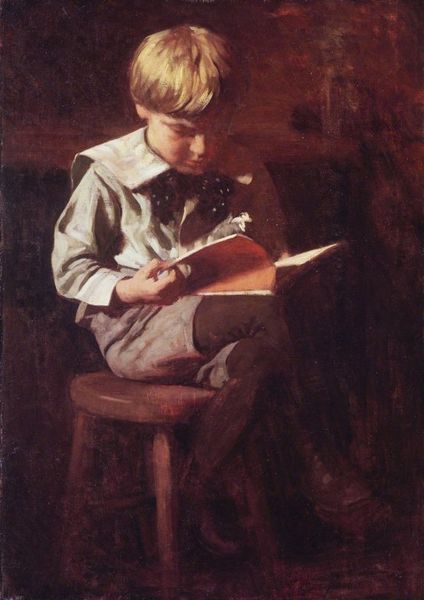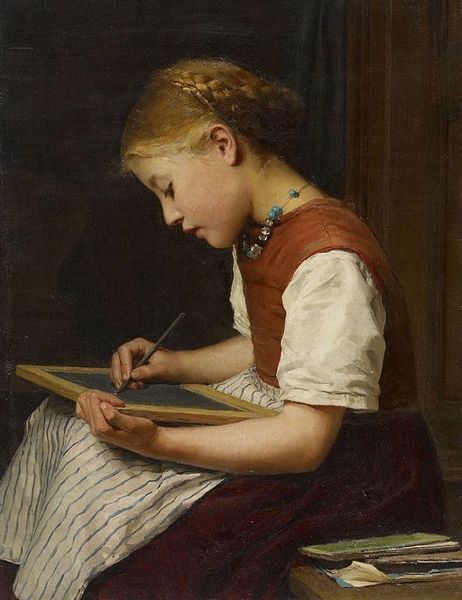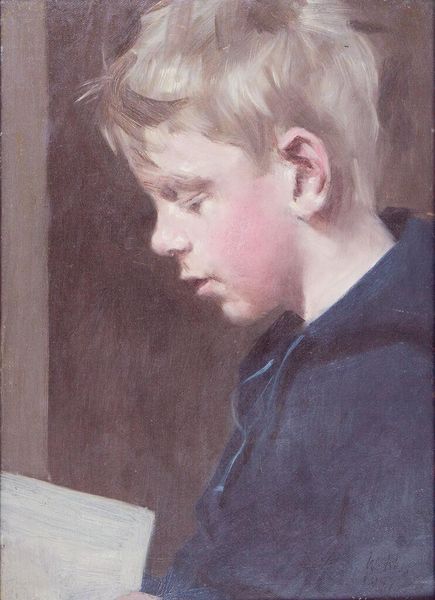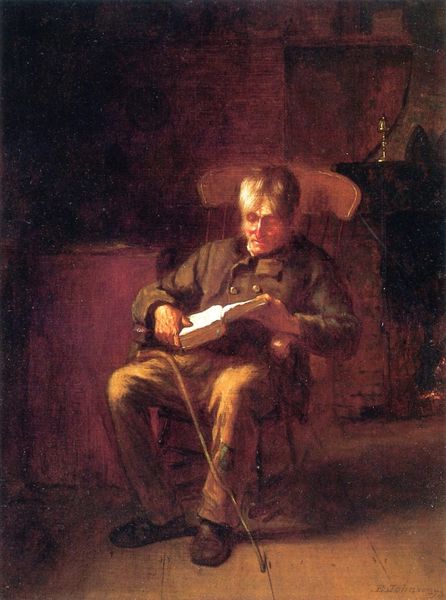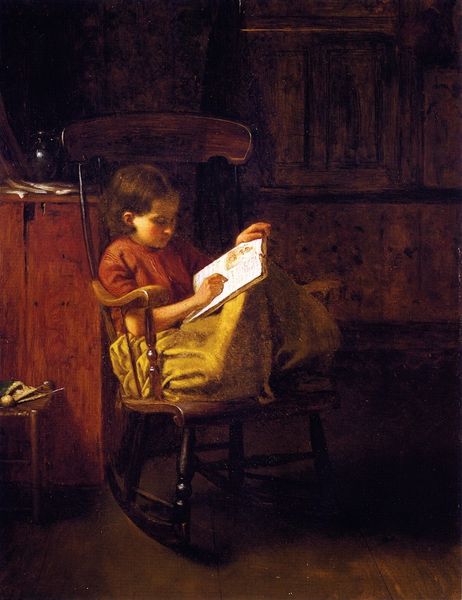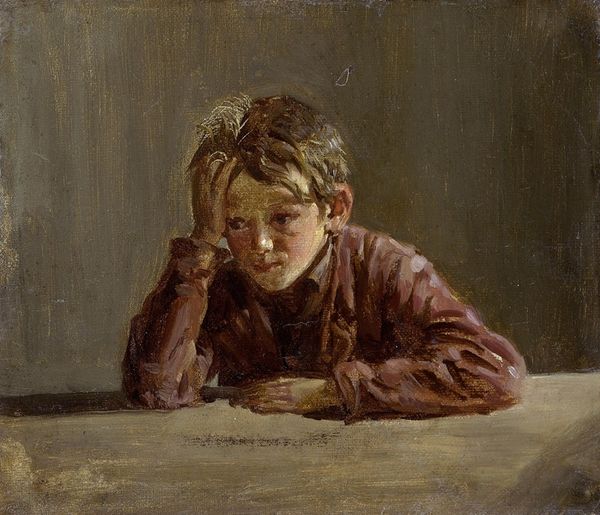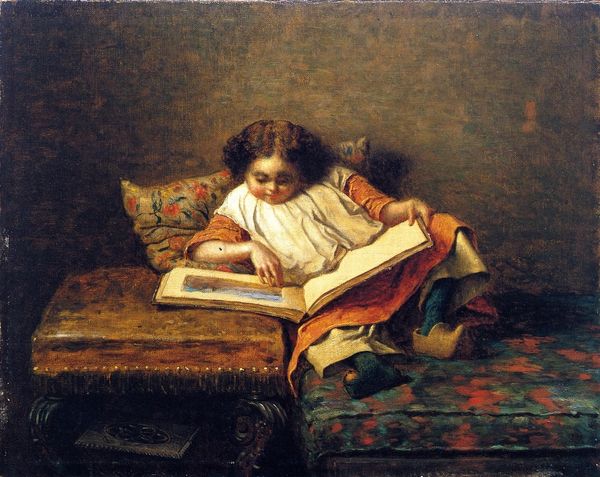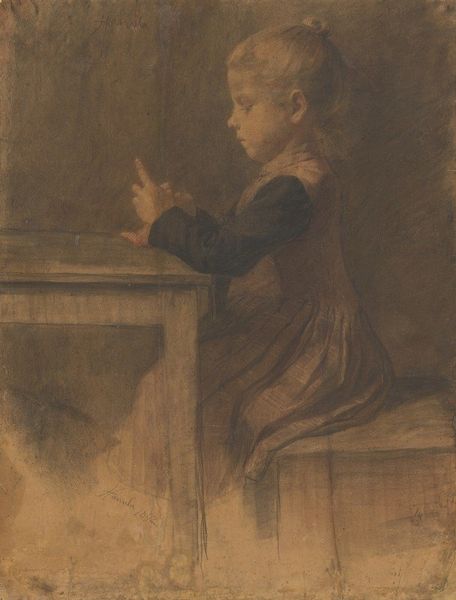
Copyright: Public domain
Editor: Here we have Albert Anker's "Writing Boy," painted in 1883. There’s such a quiet focus captured in this genre scene of a child doing his lessons. It almost feels staged, yet also intimate. What do you see in this piece, beyond the surface narrative? Curator: I see a powerful, albeit subtle, commentary on access and social mobility. Consider the era. Anker, painting in the late 19th century, is portraying a child engaged in literacy. Education was increasingly seen as a means of advancement, yet access wasn't equitable. Editor: That’s interesting. I hadn’t considered that the act of writing itself could be seen as a statement. Curator: Exactly. Who had the opportunity to learn? What pathways were open to children based on their socio-economic background? Note the detail given to the boy's worn boots, and the modest setting. Does this suggest privilege, or a struggle for something more? Editor: His clothes look quite new, and he seems rather comfortable with what he’s doing. But you are right— the books under his stool do look rather worn. Perhaps the artwork asks us to look closer and deeper. Curator: And it implicitly asks us to consider who is missing from the frame. Where are the children who didn't have access to even basic education? What were their stories? The painting becomes less about individual accomplishment, and more about systemic inequalities and opportunities granted versus those denied. How does that shift your understanding? Editor: It gives it a more… urgent feel, honestly. It's not just a charming scene; it’s a mirror reflecting societal imbalances. Thanks for making me consider the bigger picture. Curator: Absolutely. Art at its best challenges us to engage with the world around us and question what we see and take for granted, and this painting continues to be relevant even today.
Comments
No comments
Be the first to comment and join the conversation on the ultimate creative platform.
